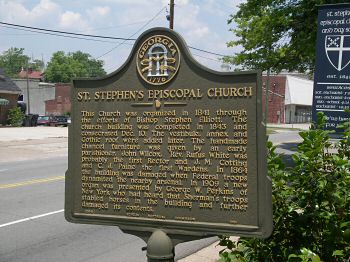 |
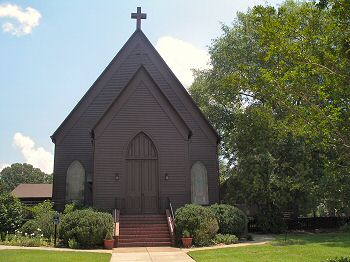 |
|
|
(June 2008)
Enlarge St. StephenÆs Episcopal
Church (1841) |
(June 2008)
Enlarge St. StephenÆs Episcopal
Church (1841). The church suffered considerable abuse during ShermanÆs
occupation. While it was used to quarter Federal horses, soldiers poured
molasses into the pipe organ to ōsweetenö the sound. The original roof
was damaged when the state magazine was exploded. A new organ was
donated in 1909 by New Yorker George W. Perkins, who had heard about the
damage wreaked by Sherman's troops |
|
|
|
||
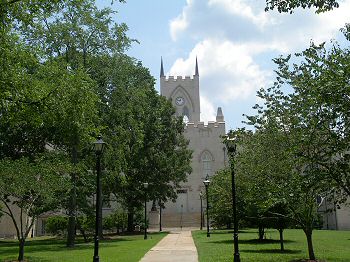 |
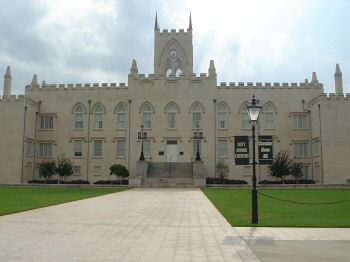 |
|
|
(June 2008)
Enlarge The Old State Capitol, the
site of the famous Secession Convention, is considered the oldest public
building in the U.S. built in Gothic Style. It served as the seat of
Government of the State of Georgia from 1803-63, and was twice partially
destroyed by fire. Restored in 1943, the exterior of the present
building is a replica of the original. The beautiful Gothic gates at the
north and south entrances to the square were constructed in the 1860s,
after the Civil War, of bricks from the arsenal and magazine destroyed
by Sherman's soldiers. Today the old state capitol is used by Georgia
Military College. The Secession Convention convened here Jan. 16, 1861,
and three days later passed the Secession Act by a vote of 208-89.
However, three years later, visiting Yankees repealed the secession
ordinance in a mock legislative session, featuring drunken and rowdy
soldiers. Gen. W.T. Sherman's men did less damage to the town than what
was probably expected by Georgians at the time. His provost guard, which
camped out on the statehouse square, burned the brick State Arsenal on
the North side, and exploded the brick magazine on the opposite side.
Churches were damaged, as was the interior of the statehouse and the
state library. Sherman burned the State Penitentiary where Georgia
College is located today, but spared two large cotton warehouses, a
textile factory, a flourmill and a foundry reportedly because they were
owned by Northerners or foreigners |
(2008)
Enlarge Civil War Capital of
Georgia William Cook photo |
|
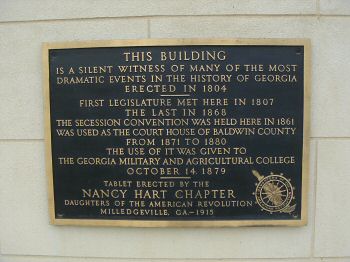 |
 |
|
|
(2008)
Enlarge Civil War Capital marker William Cook photo |
(June 2008)
Enlarge
1864 bridge piers on the Oconee River,
near Milledgeville |